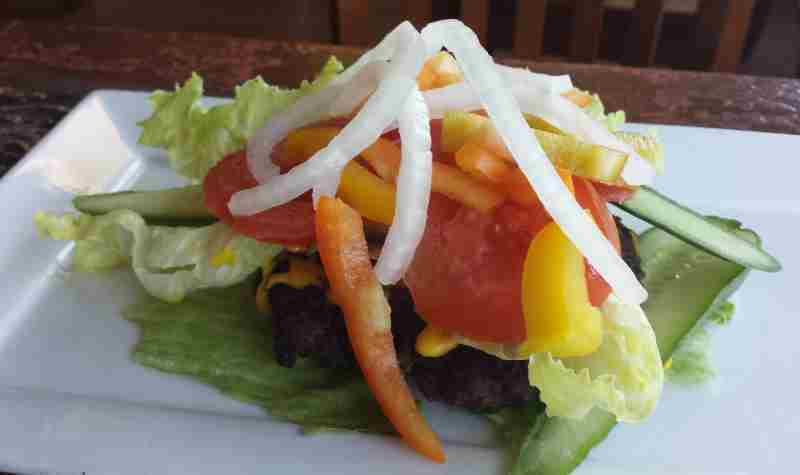Best Foods and Worst Foods
 Optimal health, weight management and optimal sports performance are all dependent on optimal food choices.
Optimal health, weight management and optimal sports performance are all dependent on optimal food choices.
I am often asked “what are the best or healthiest foods”? Although I doubt there is one “Best” food, there are “better” choices and the following lists of “best” and “worst” may encourage you to shop and stock your kitchen wisely.
The “best” foods list contains a selection of nutrient dense, low glycemic index (relative rate of rise in blood sugar leading to insulin production) items that feed your cells well and control insulin production.
The “worst” foods list contains an array of low nutrient density, additive loaded, high sugar, high glycemic index items of questionable nutritional value.
When shopping, choose the best and avoid the worst at all costs. If it is not in the house you will have difficulty submitting to any temptation to eat the worst “foods”.
Best foods:
- Oatmeal – large flake, slow cooking. Low glycemic source of complex carbohydrates, high in fibre, source of good fats and excellent if you add some protein supplement to it.
- Sprouted Wheat Bread – Glycemic index of only 27 compared to 72 for white bread. The protein is 5.5gm/ slice (twice that of white or whole wheat bread) and the carbohydrate content is only 15 - 17 gm (several gm lower than conventional bread). Also high in fibre.
- Salmon – wild salmon (not farmed salmon) is an excellent protein source and a top source of the Omega 3 essential fatty acid EPA. Also high in calcium.
- Shrimp – great source of protein, high in minerals phosphorous, calcium, potassium and easy to prepare. Don’t worry about the cholesterol warnings given by some “authorities”. Cholesterol in food has nothing to do with cholesterol in blood.
- Crab – same redeeming qualities as shrimp.
- Oranges – a moderate glycemic source of vitamins, particularly vitamin C.
- Strawberries – a low glycemic source of anti-oxidant vitamins and low in Calories.
- Broccoli – a high fibre, low glycemic, high protein vegetable. Broccoli is 40% protein (although not complete protein it is great when combined with complimentary sources). Eat it a little “crunchy” to ensure you haven’t destroyed the nutrients by overcooking.
- Low fat milk (1 or 2%) – reasonably well balanced in the macronutrients. I regard it as a complete, stand alone snack consistent with the 40-30-30 balance I advocate. Milk protein has excellent absorption and is a great source of bone building (repairing) minerals.
- Yogurt (plain-2%) – same as milk.
- Cottage Cheese (2%) – same as milk but lower in carbohydrate so you can add nutrient dense, low glycemic fruit for nutrition and flavour.
- Beef (lean) - Great source of complete protein, B vitamins and minerals iron and zinc. For optimal digestion only cook for safety, do not over cook.
- Chicken - same as beef (a little lower in iron).
- Soy Beverage – (notice I said beverage and not milk. Beverage is the official title) great source of protein and isoflavones that have many health giving and preventive qualities. Certified organic and sweetened with natural sugars like dehydrated can juice is best. Great alternative to those who are lactose intolerant.
- Tofu – offers the same benefits as Soy Beverage but has broader versatility. Can be mixed with or cooked with anything and takes on the flavour of whatever is mixed with.
- Nuts – particularly almonds. An excellent source of healthy fats and lots of minerals. Primarily a fat but a good source of protein and an “insulin neutral” snack.
Worst Foods:
This will be just a list – no editorial comment – to keep me out of trouble with the distributors of these items. Just don’t eat them if you desire optimal health. Most are low in nutrients, high in sugar, high glycemic index foods that leads to an insulin disaster. Some contain artificial sweeteners, cancer causing acrylomides, additives like propylene glycol (antifreeze) or the altered toxic fats known as trans fatty acids.
- White Bread and rolls.
- Rice Cakes
- White Sugar
- Potato Chips
- Margarine
- Soft Drinks
- Snack Bars
- French Fries and other deep fried stuff.
- Boxed cereals
- Donuts
- Fruit juices and fruit flavoured drinks (liquid candy)
- Cookies
- Cakes
- Saltine type crackers
- Jellies and Jams
- Cheap (long ingredients list) ice cream.
If you realize that all tastes are acquired and that “knowledge power” will always win over so called “will power”, you now have some appropriate information that will help to improve or maintain optimal health.
Author
Dr. L. Lee Coyne, the Healthy Professor
 Dr. Coyne is a former Professor of exercise physiology and nutrition and the nutrition coach to many high performance athletes including several Canadian Olympic teams. (Tanya Dubnicoff, Olympic cyclist, Michelle Morton, Olympic speed skater, several Olympic Biathletes, skiers and hockey players, Jamie Clarke, Everest Summiteers) and successful "Empty Quarter" desert expedition leader.
Dr. Coyne is a former Professor of exercise physiology and nutrition and the nutrition coach to many high performance athletes including several Canadian Olympic teams. (Tanya Dubnicoff, Olympic cyclist, Michelle Morton, Olympic speed skater, several Olympic Biathletes, skiers and hockey players, Jamie Clarke, Everest Summiteers) and successful "Empty Quarter" desert expedition leader.
His writing appears regularly in the Fit Start insert of the Calgary Sun and a bi-monthly health and fitness magazine “Impact”.
His books include “Fat Won’t Make You Fat”, “The Sports Nutrition Coaches Handbook” & “Nutritional Symptomatology, the consumers handbook”. His most recent release is “The Little Book of Nutrition Nuggets”.
You may contact Lee through Fish Creek Publishing at 1-800-668-4042 or by e-mail dr.coyne@leanseekers.com or visit Dr. Coyne's website to purchase books and coaching online:
"Dr. L. Lee Coyne, the Healthy Professor"